Help with color wheel, is wood a color?
debrak_2008
11 years ago
Featured Answer
Sort by:Oldest
Comments (58)
debrak_2008
11 years agolast modified: 9 years agobronwynsmom
11 years agolast modified: 9 years agoRelated Discussions
What color to paint this antique wheel?
Comments (15)I'm a fan of subtle effects - e.g. I prefer monochrome/limited color palette to polychrome. Oakleyok's garden currently is in a nice range of suble colors that harmonize well together. The wheel shape nicely references the curved top of the window on the right and the round-ish window on the left, so it makes a nice triad with those two accents on the house. I would have left the ornamental fence around the bed black to let it fade into the background and not distract from the roses. If the fence was black, I'd be inclined to move the wheel forward so the round shapes make a more extended triad together, drawing your eyes to encompass the whole area as one piece. But, with the fence white, I think the pattern in the fence and the pattern of the wheel would fight with each other. I think adding any bright colors to the wheel would just add a distraction; adding a green or blue-green just doesn't feel right to me - because they're not colors you'd expect to see on an old wheel so they'd strike a wrong note for me. People always look for the front door! :-) The straight path leading to it is good at saying 'go this way!' Keep in mind that I tend to be wildly out of sync with what most people like in the garden these days!...See Moregardeners color wheel
Comments (17)GGG, There are no names beyond what I mentioned, red, orange red, red orange, orange and so on. So that many divisions at least. Yesterday I took a break and took the wheel out into the garden. There is no pink on this wheel. The deep true reds such as lobelia cardinalis, Jacob Kline monarda and the red impatiens do not fit. The true red on the wheel is the exact color of my Trumpeter rose, which even I recognize as being quite orange red. So all the tints of the red are what I call apricot, salmon and coral. Victoria Blue annual salvia is the violet color, as is the salvia black and blue. My balloon flower did not really fit, it is obviously more purple than the black and blue salvia, but not as purple as the red violet, which is where the purple potato vine and verbena bonariensis would fall. Rudbeckia was the yellow orange, not the orange yellow. I was interested to see how many things I have actually were in the violet red section; even the orange perfection phlox. : ) The most amazing was the single Pat Austin rose currently blooming. Sitting against the wheel, Pat spanned five hues! In spite of that, the gradations in the wheel are beautifully done and the colors really blend well with the plant colors. It is far superior to my basic wheel. It is interesting to see how narrow I am. I get antsy over the yellowness of the rudbeckia and the blueness of the salvia....See MoreProfessional Help Needed (I'm Lost on the Color Wheel)
Comments (12)Honestly I think that it may go purpley on you too. I'm not at home w/ my fan decks but looking at it on the monitor though. I think that this is one of those situations where if you see the color that you think is 'it' you may want to take it down a notch. Once the color is on all 4 walls it's going to reflect any tones back on each wall and potentially intensify. Tricky situation. Along the same saturation range but less purpley or bluey I saw Heather Gray 2139-40 and Storm Cloud Gray 2140-40. It looks like Storm Cloud Gray, is getting close to some brown ranges too. Twilight Gray 2137-40 is also pretty. 2 tips: Hold that green color of your chairs next to the chip to see what colors it draws out of the chip. Sometimes you see big things that you never noticed before just looking at only the chip and no other color around it. It can take on a totally differnt color. Second: Look at the neighboring color strips and cards around the color strip that you're looking at. What colors are they leaning towards? Do you like what you see? The strip that you are looking at may well have varying intensities of those colors....See MoreHelp choosing the color of a wooden fence - design help!
Comments (12)As far as longevity, in my experience, the weak point on the post is the part below ground level, which eventually rots and the post becomes unstable and has to be replaced. Are you using metal below ground or is it the same wood? Even Cedar is not going to last forever. I know they have come out with a newer design where you can insert the wooden post into a brown metal one for the lower part that goes into the ground. My next door neighbor did that, but that was not available when I had my fence put in many years ago....See MoreAnnie Deighnaugh
11 years agolast modified: 9 years agomclarke
11 years agolast modified: 9 years agoLori A. Sawaya
11 years agolast modified: 9 years agodebrak_2008
11 years agolast modified: 9 years agobeeps
11 years agolast modified: 9 years agoAnnie Deighnaugh
11 years agolast modified: 9 years agoLori A. Sawaya
11 years agolast modified: 9 years agoAnnie Deighnaugh
11 years agolast modified: 9 years agotetrazzini
11 years agolast modified: 9 years agoblfenton
11 years agolast modified: 9 years agoAnnie Deighnaugh
11 years agolast modified: 9 years agoAnnie Deighnaugh
11 years agolast modified: 9 years agomsrose
11 years agolast modified: 9 years agoUser
11 years agolast modified: 9 years agomclarke
11 years agolast modified: 9 years agoUser
11 years agolast modified: 9 years agocindyloo123
11 years agolast modified: 9 years agodebrak_2008
11 years agolast modified: 9 years agoLori A. Sawaya
11 years agolast modified: 9 years agoLori A. Sawaya
11 years agolast modified: 9 years agoLori A. Sawaya
11 years agolast modified: 9 years agoAnnie Deighnaugh
11 years agolast modified: 9 years agoAnnie Deighnaugh
11 years agolast modified: 9 years agoLori A. Sawaya
11 years agolast modified: 9 years agodebrak_2008
11 years agolast modified: 9 years agooldbat2be
11 years agolast modified: 9 years agoLori A. Sawaya
11 years agolast modified: 9 years agoBumblebeez SC Zone 7
11 years agolast modified: 9 years agoAnnie Deighnaugh
11 years agolast modified: 9 years agoBumblebeez SC Zone 7
11 years agolast modified: 9 years agoLori A. Sawaya
11 years agolast modified: 9 years agodebrak_2008
11 years agolast modified: 9 years agomclarke
11 years agolast modified: 9 years agobronwynsmom
11 years agolast modified: 9 years agodebrak_2008
11 years agolast modified: 9 years agobronwynsmom
11 years agolast modified: 9 years agoAnnie Deighnaugh
11 years agolast modified: 9 years agodebrak_2008
11 years agolast modified: 9 years agoUser
11 years agolast modified: 9 years agobronwynsmom
11 years agolast modified: 9 years agodebrak_2008
11 years agolast modified: 9 years agoAnnie Deighnaugh
11 years agolast modified: 9 years agobronwynsmom
11 years agolast modified: 9 years agooldbat2be
11 years agolast modified: 9 years agoLori A. Sawaya
11 years agolast modified: 9 years agodebrak_2008
11 years agolast modified: 9 years agokitchendetective
11 years agolast modified: 9 years agoLori A. Sawaya
11 years agolast modified: 9 years ago
Related Stories
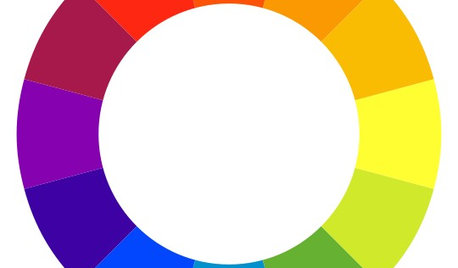
COLORChoosing Hues: Roll With the Color Wheel
See how an age-old tool can help you find the right paint
Full Story
SMALL HOMESHouzz Tour: Rolling With Simplicity in a Tiny House on Wheels
Just 240 square feet, this California home encourages efficient living — but there’s still room for yoga
Full Story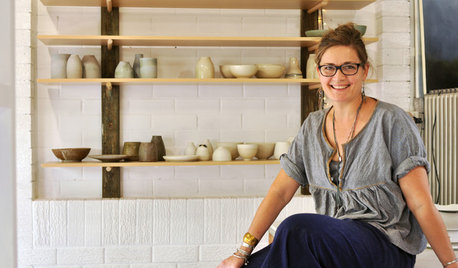
STUDIOS AND WORKSHOPSStudio Tour: Garage Keeps the Wheel of Creativity Turning
Step inside potter Lisa Russell's converted garage and find out how she creates her ceramics at home
Full Story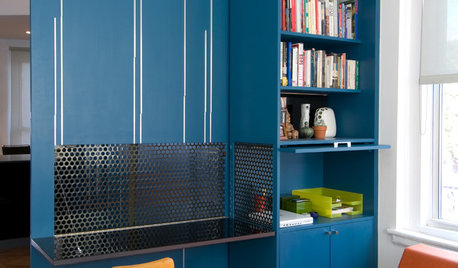
FURNITUREMobile Furniture: Put a Wheel on It
See how casters can give your furniture a functional new spin
Full Story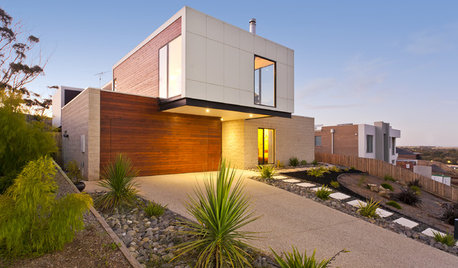
GARAGESGarage Begone! 10 Smart Solutions for Hiding Your Wheels
Don't let the home for your cars overwhelm your curb appeal
Full Story
COLORPick-a-Paint Help: How to Create a Whole-House Color Palette
Don't be daunted. With these strategies, building a cohesive palette for your entire home is less difficult than it seems
Full Story
KITCHEN DESIGNKey Measurements to Help You Design Your Kitchen
Get the ideal kitchen setup by understanding spatial relationships, building dimensions and work zones
Full Story
UNIVERSAL DESIGNMy Houzz: Universal Design Helps an 8-Year-Old Feel at Home
An innovative sensory room, wide doors and hallways, and other thoughtful design moves make this Canadian home work for the whole family
Full Story
LANDSCAPE DESIGNHow to Help Your Home Fit Into the Landscape
Use color, texture and shape to create a smooth transition from home to garden
Full Story




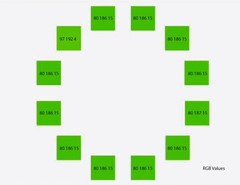


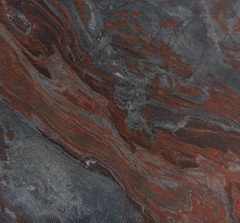

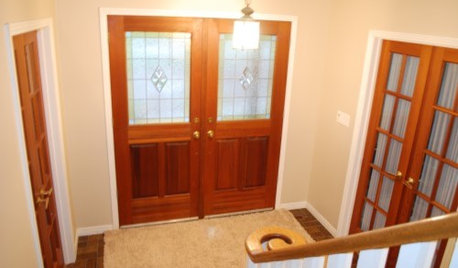



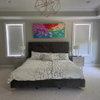
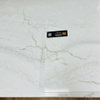
Annie Deighnaugh